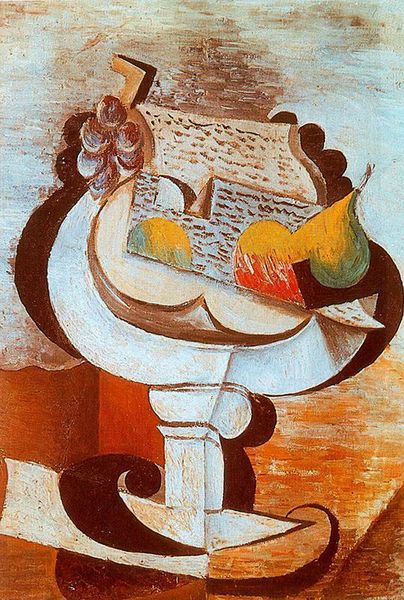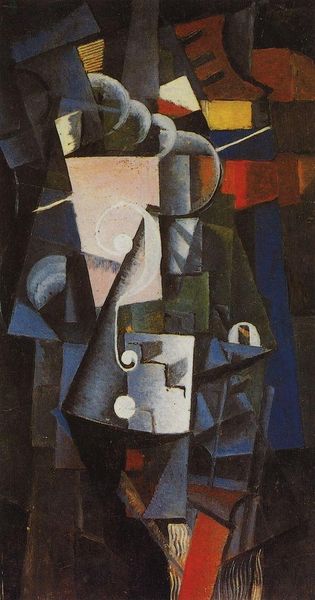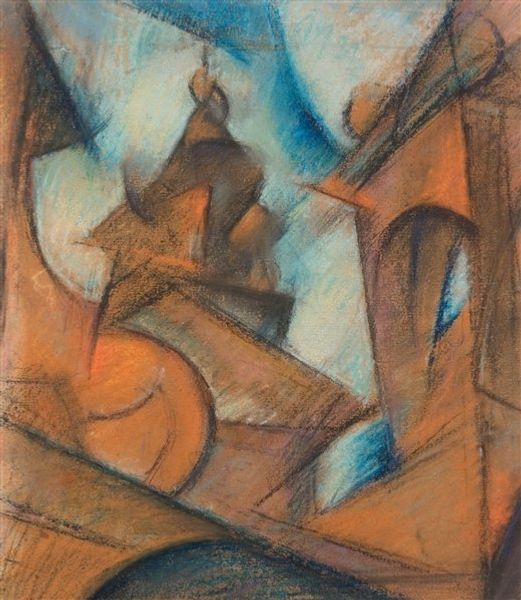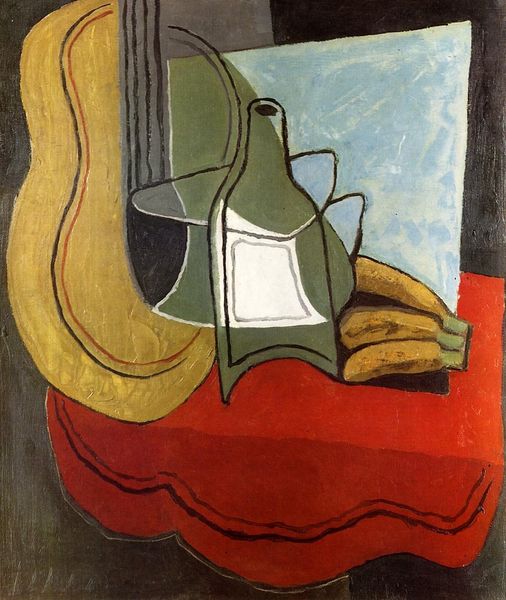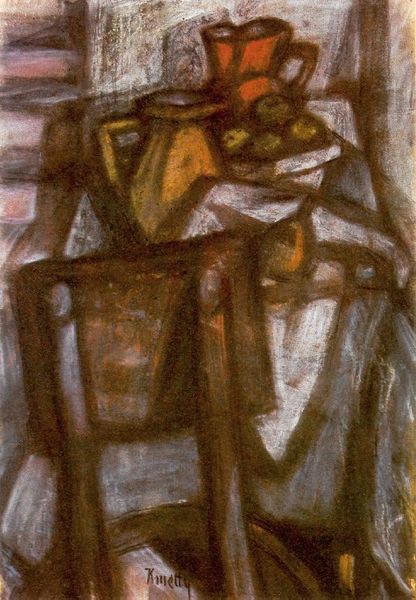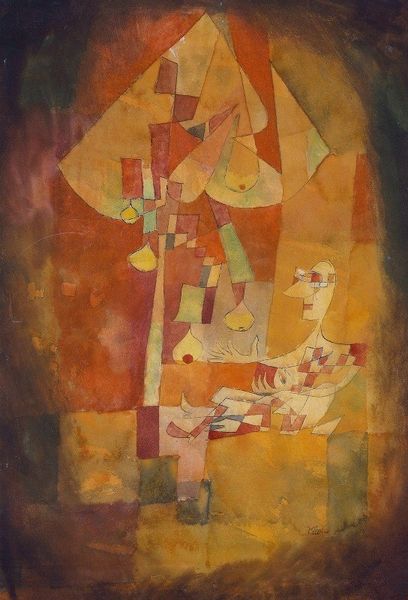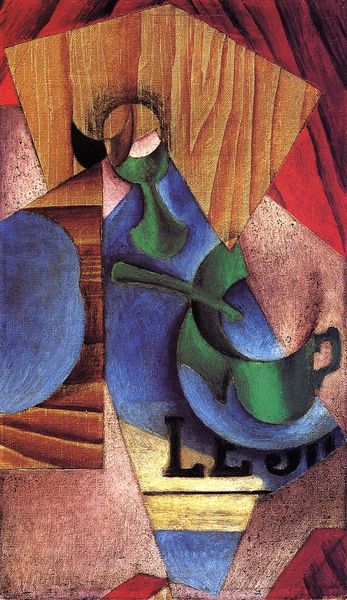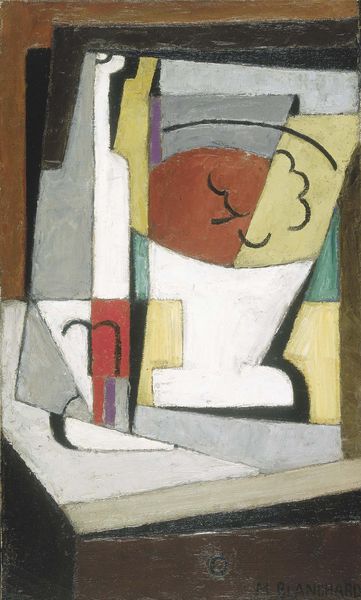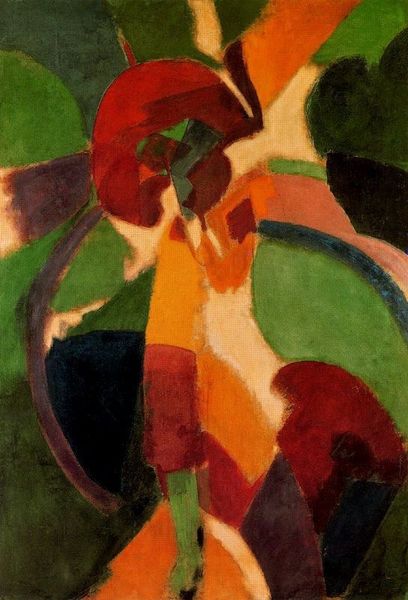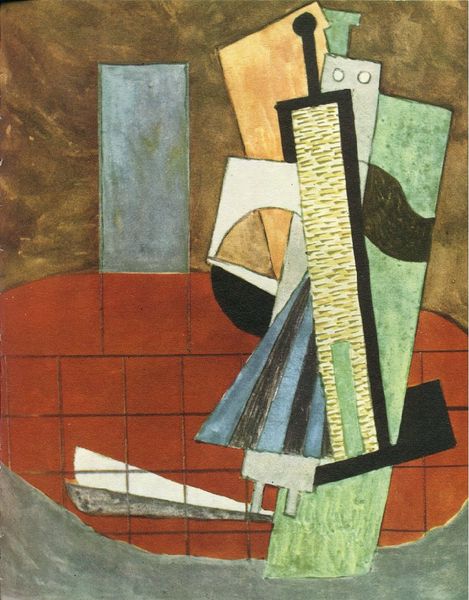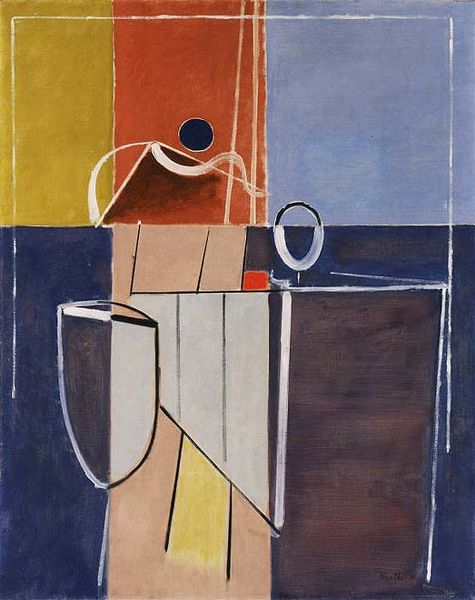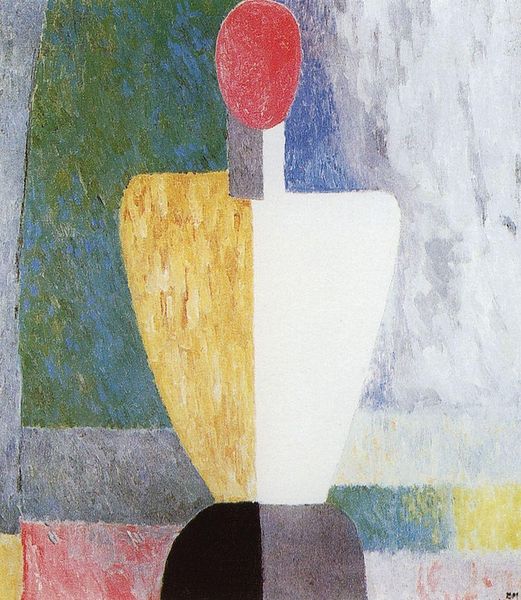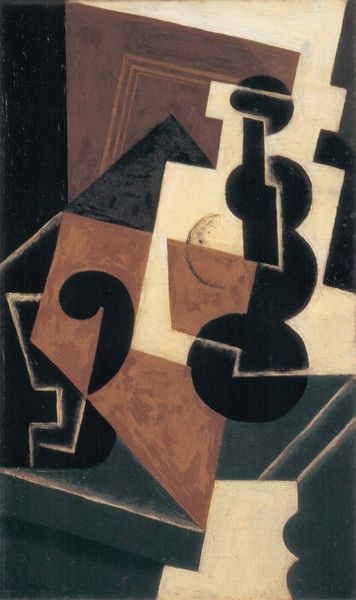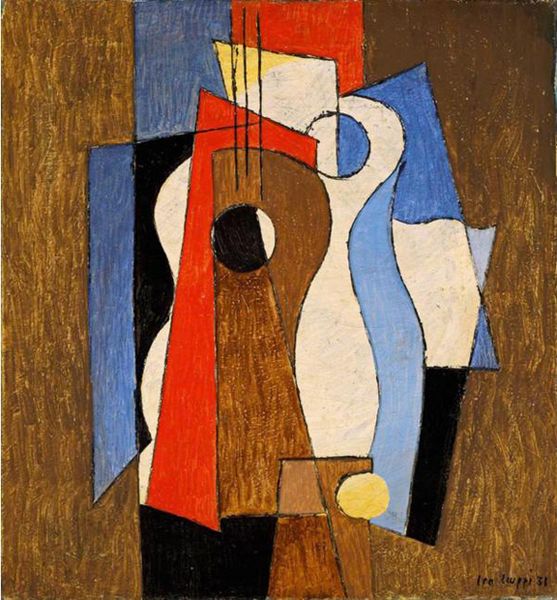
oil-paint
#
portrait
#
still-life
#
cubism
#
oil-paint
#
oil painting
#
geometric
#
modernism
Copyright: Kmetty János,Fair Use
Editor: This is János Kmetty's "Still Life" from 1930, an oil painting rendered in a Cubist style. The subdued tones give it quite a somber mood. What strikes me is the way the everyday objects – a pitcher, fruit bowl, and even what seems like a sculpted head – are broken down into these almost architectural shapes. What do you see in this piece? Curator: What interests me is the painting’s implicit commentary on the value we ascribe to objects, both functional and artistic. Kmetty flattens the distinction between them by treating them as equivalent units of visual information. The pitcher, normally a tool for service, and the sculpted head, usually a signifier of artistic skill, are equally represented with blocks of color and geometric forms. Editor: So, you're saying the painting is making a point about how we value things based on how they are made, regardless of their practical use? Curator: Exactly! Think about the context. In the 1930s, debates raged around mass production, the role of craft, and the 'aura' of the unique art object. By painting both useful and ornamental items in the same Cubist style, Kmetty draws attention to their constructed nature, the labor embedded within each one. The 'hand' of the artist, usually prized, is deliberately obscured, prompting questions about authorship and the mechanization of both art and daily life. The painting material—oil paint—traditionally signifies wealth and the fine arts, doesn’t it? But here it represents modest, accessible subjects. What effect does that have on you, the viewer? Editor: It makes me wonder what Kmetty wanted viewers to value: the items or their materials. That's a different way of viewing a still life, something usually focusing on symbolic meaning rather than materials or how it was produced! Curator: Yes, and it points us towards a deeper appreciation of not just what is depicted, but how it came to be. It challenges us to rethink value itself, as it exists outside the sphere of artistic representation. Editor: This approach truly made me think about art in an unfamiliar way, almost like reverse engineering of the painting! Curator: Precisely, that's the purpose. Focusing on production, materials and labor brings in novel meanings.
Comments
No comments
Be the first to comment and join the conversation on the ultimate creative platform.
